
Rei Hino, better known as Sailor Mars, is a fictional character in the Sailor Moon manga series written and illustrated by Naoko Takeuchi. In the series, Rei is her sailor form's alternative human identity as part of the Sailor Soldiers, female supernatural fighters who protect the Solar System from evil.

Peacemaker Kurogane is a Japanese manga series written and illustrated created by Nanae Chrono. It is unrelated to the Peace Maker manga by Ryōji Minagawa. The story begins in 19th century Japan before the Meiji Restoration, a chain of events that led to enormous changes in Japan's political and social structure while the seeds of the revolution are being planted. The story follows the boy protagonist, Tetsunosuke Ichimura, who joins the Shinsengumi while seeking strength to avenge his parents' death at the hands of a Chōshū rebel.
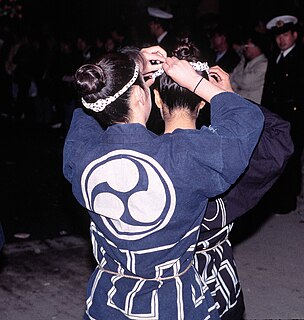
A happi (法被/半被) is a traditional tube-sleeved Japanese coat, usually worn only during festivals. Happi typically feature symbols and/or text on the lapels, with a larger design on the back of the coat, typically the name or the festival or the participating association; the kanji for may also be present.

Princess Knight, also known as Ribon no Kishi is a Japanese manga series written and illustrated by Osamu Tezuka. This manga follows the adventures of Sapphire, a girl who was born accidentally with a blue heart of a boy and a pink heart of a girl. She pretends to be a male prince to prevent the evil Duke Duralumin from inheriting the throne of Silverland. The gender-bending main character was inspired by the all-female musical theater group Takarazuka Revue in which women performed both female and male roles.
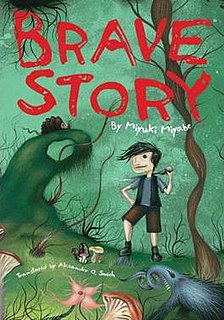
Brave Story is a Japanese fantasy novel written by Miyuki Miyabe. It was serialized in various regional newspapers between November 11, 1999 and February 13, 2001, before being published in two hardcover volumes by Kadokawa Shoten inBrave Story has spawned into a substantial media franchise. The novel was adapted into a manga by Yoichiro Ono and Miyabe herself, who wrote the new story for the manga, which was serialised in Shinchosha's Weekly Comic Bunch. Shinchosha collected the chapters of Brave Story in twenty tankōbon volumes and released them between April 2004 and May 2008. In the manga version Wataru is slightly older and already in high school.
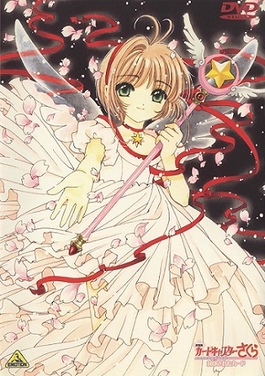
Cardcaptor Sakura Movie 2: The Sealed Card is a 2000 Japanese anime film directed by Morio Asaka and written by Nanase Ōkawa, with animation produced by Madhouse. The film is a sequel and finale to the anime television series adaptation of Clamp's Cardcaptor Sakura, and is the second feature-length film based on the series. The film follows Sakura Kinomoto as she faces the final Clow Card alongside her friends and allies, and comes to terms with her romantic feelings for Syaoran Li.
Shiho Sugiura is a manga artist. Shiho Sugiura debuted in 1994 and works under the BL publisher Tosuisha (冬水社). Sugiura's newest manga series, Shuuten Unknown, is serializing in Monthly Comic Avarus.

Rurouni Kenshin: Reflection, known in Japan as Rurōni Kenshin -Meiji Kenkaku Romantan- Seisōhen, is a Japanese original video animation (OVA) which serves as a sequel to the Rurouni Kenshin anime television series, an adaptation of the manga series of the same name created by Nobuhiro Watsuki. It was produced by Studio Deen, directed by Kazuhiro Furuhashi and written by Reiko Yoshida and released in Japan from December 2001 to March 2002.

Angel of Darkness is a four-part hentai anime series released in 1994 by Pink Pineapple in Japan. The series focuses on tentacle rape and S&M and was adapted into a live-action series. The animated series is released in North America by ADV Films under their SoftCel Pictures label. The genre is situated between sci-fi horror and the slasher film.
Kaoru Kurimoto was the pen name of Sumiyo Imaoka, a Japanese novelist. Imaoka also used the pen name Azusa Nakajima to write criticism and music. She was known for her record-breaking 130-volume Guin Saga series, which has been translated into English, German, French, Italian and Russian. Her style has been described as being part of the New Wave science fiction movement. Outside of her literary endeavors, she was a playwright, composer, and pianist who performed with her own jazz ensemble, the Azusa Nakajima Trio.
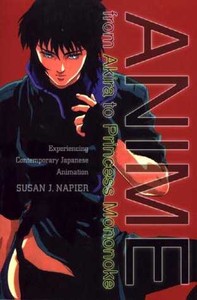
Anime from Akira to Princess Mononoke: Experiencing Contemporary Japanese Animation is a scholarly book which uses techniques of literary criticism on anime by Susan J. Napier published in 2001 by Palgrave Macmillan. It discusses themes of shōjo, hentai, mecha, magical girlfriend and magical girl anime using select titles. It also discusses some aspects of the English-speaking anime fandom. The book has been translated into Japanese, and had four editions, before a revised fifth edition was published in 2005 as Anime from Akira to Howl's Moving Castle: Experiencing Contemporary Japanese Animation.
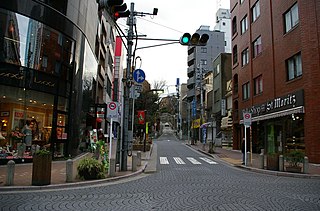
Azabu-jūban (麻布十番) is a district of Minato, Tokyo, Japan. It consists of 1 to 4-chōme. Azabu-Jūban Station is located in this district.

Even a Monkey Can Draw Manga is a parody instructional book by Koji Aihara and Kentaro Takekuma.

Iron Wok Jan is a Japanese manga written and illustrated by Shinji Saijyo. The manga was licensed in English by ComicsOne before the license was transferred to DrMaster.
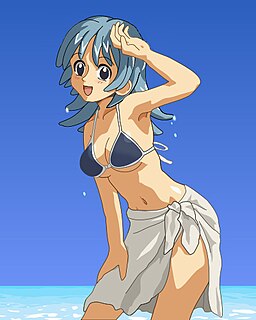
Fan service, fanservice or service cut, is material in a work of fiction or in a fictional series that is intentionally added to please the audience, often sexual in nature, such as nudity. The term originated in Japanese in the anime and manga fandom, but has been used in other languages and media. It is about "servicing" the fan – giving the fans "exactly what they want." Fan service can also refer to other stories that contain visual elements.
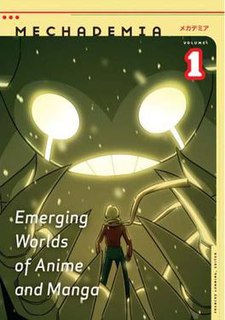
Mechademia: Second Arc is a biannual peer-reviewed academic journal in English about Japanese popular culture products and fan practices. It is published by the University of Minnesota Press and the editor-in-chief is Frenchy Lunning. Mechademia has also held an annual conference since 2001.
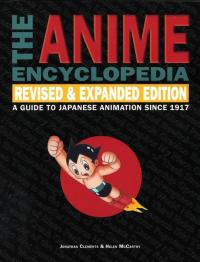
The Anime Encyclopedia: A Guide to Japanese Animation Since 1917 is a 2001 encyclopedia written by Jonathan Clements and Helen McCarthy. It was published in 2001 by Stone Bridge Press in the United States, and a "revised and expanded" edition was released in 2006. In the United Kingdom, it was published by Titan Books. The third edition was released on 3 March 2015 with the subtitle of A Century of Japanese Animation. It gives an overview of most of the famous anime works since 1917.

Samurai from Outer Space: Understanding Japanese Animation is a 1998 book written by Antonia Levi. The book was published in North America by Open Court Publishing Company on December 30, 1998.

From Impressionism To Anime: Japan As Fantasy And Fan Cult In The Western Imagination is a scholarly book by Susan J. Napier published in 2007 by Palgrave Macmillan. It connects Japanophilia, Orientalism, Japonisme and modern anime and manga fandom.
Sports manga is a genre of Japanese manga and anime that focuses on stories involving sports and other athletic and competitive pursuits. Though Japanese animated works depicting sports were released as early as the 1920s, sports manga did not emerge as a discrete category until the early 1950s. The genre achieved prominence in the context of the post-war occupation of Japan, and gained significant visibility during and subsequent to the 1964 Summer Olympics in Tokyo. Noted as among the most popular genres of manga and anime, sports manga is credited with introducing new sports to Japan, and popularizing existing sports.

















